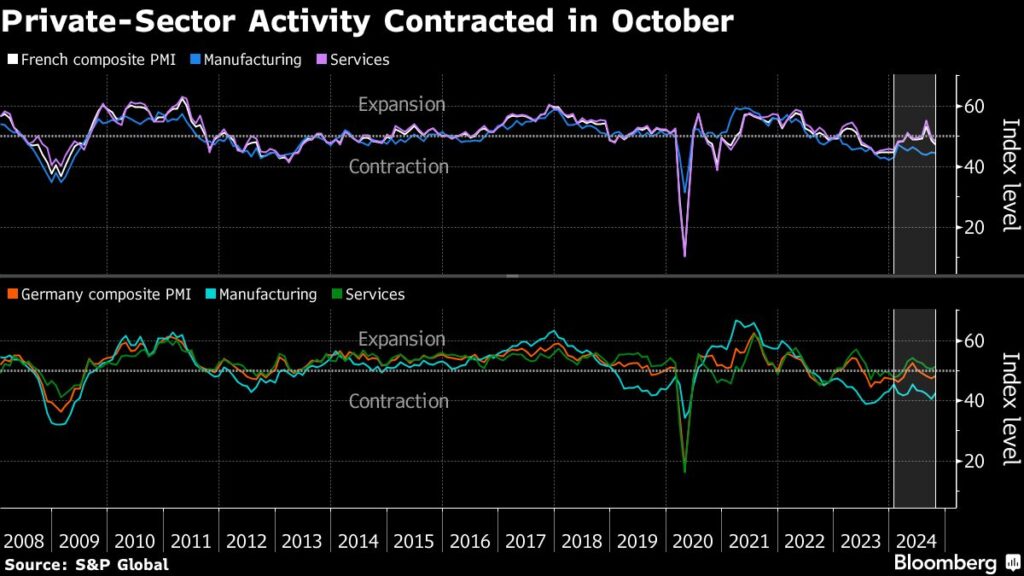In October, business activity in Germany and France, the largest economies in the euro area, experienced contrasting trends, with Germany showing potential signs of recovery and France facing deeper economic turmoil. According to the flash Purchasing Managers’ Index (PMI) from S&P Global, Germany’s private sector contraction eased, rising to 48.4 from 47.5 the previous month. Although this figure remains below the 50-point mark that signifies expansion, it surpassed economists’ modest expectations. Chief economist Cyrus de la Rubia of Hamburg Commercial Bank noted that the start of the fourth quarter displayed better-than-anticipated dynamics, with services expanding and manufacturing’s decline slowing. This development suggests that growth could be on the horizon for Germany, contrasting sharply with the situation in France.
In stark opposition to Germany’s resilience, France’s economic downturn intensified, characterized by a significant decline in demand, particularly pronounced in the manufacturing sector. The French PMI fell to 47.3 from 48.6, defying analysts’ forecasts for improvement. This situation reflects broader economic challenges within France, contributing to a slowdown in the euro area’s overall growth. Observers indicated that both Germany and France are major contributors to the economic weaknesses prompting the European Central Bank (ECB) to adopt more aggressive monetary easing measures, including a recent decision to cut interest rates, with traders now estimating a significant probability of further cuts in December.
The manufacturing sector in the eurozone has been grappling with prolonged challenges, including lackluster demand from major export markets such as China, coupled with domestic issues like elevated energy costs and political uncertainty. While overall economic conditions have been under strain, Germany has seen its services sector rebound and mitigate some of the manufacturing losses. Conversely, France continues to experience a deteriorating economic environment marked by falling PMI readings, exacerbated by expected government measures involving tax increases and spending cuts aimed at addressing an alarming budget deficit.
As the fourth quarter commences, the outlook for France remains grim, burdened by the same challenges that plagued the previous quarter. Tariq Kamal Chaudhry, an economist at Hamburg Commercial Bank, noted that France is caught in a cycle of economic decline, compounded by ongoing uncertainties, even after early elections aimed at stabilizing the political landscape. The persistence of these challenges raises concerns about the trajectory of France’s recovery efforts, adding strain to the euro area as a whole.
The latest PMI data will be closely examined by ECB officials as they deliberate on future monetary policy directions. These indexes deliver key insights into economic trends that can influence decision-making processes around interest rates. Following the ECB’s latest rate cut, market sentiment is leaning towards the possibility of a more significant reduction in December, particularly with growing apprehensions about labor market conditions. Early indications suggest a softening demand for labor within Germany, which reported its steepest employment decline since June 2020. In contrast, France’s employment changes have been less severe, highlighting differing economic health between the two countries.
In conclusion, Germany’s performance shows early signs of stabilization, driven by growth in the services sector, which may lead to potential expansion in the fourth quarter. On the other hand, France’s economic landscape appears increasingly challenging, with significant demand contractions and policy responses that may further complicate recovery. The differing trajectories of the two economies could have far-reaching implications for the euro area, influencing ECB policy in an attempt to counteract these adverse trends and stimulate growth. As economic data evolves, market watchers will continue to remain vigilant, interpreting PMI releases as indicators of broader economic shifts that might shape the future of the European economy.

